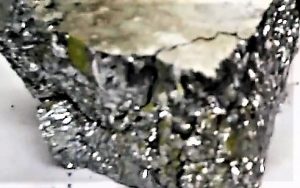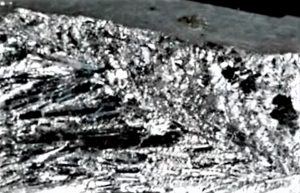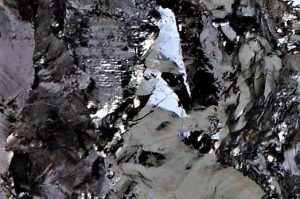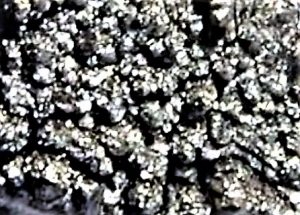Gadolinium
The gadolinium is one of the light elements of rare earths that belong to the Lanthanide series. It is the element that occupies position number 64 of the periodic table. It got its name from gadolinite, a mineral from which the element comes.

- Symbol: Gd
- Atomic number: 64
- Group: 3
What is gadolinium?
The gadolinium is a metal or element of the periodic table that belongs to the group of lanthanides or rare earths, is a ductile material that has a white color, is bright and silver at the same time.
Characteristics of gadolinium
This metal has striking characteristics, among them, we can mention the following:
- It is a shiny, soft, silvery white metal that is ductile and malleable.
- It is one of the elements that belong to the group of rare earths.
- It is capable of producing salts
- Its symbol in the periodic table is the Gd.
- It has an atomic number of 64 and atomic weight of 157.25 and belongs to the group of rare earths and as a natural element is composed of eight isotopes.
- It is named after the Swedish scientist gadolinium.
- The oxide, Gd2O3, in powder form, is white and the solutions of its salts are colorless.
- Metallic gadolinium is paramagnetic and becomes strongly ferromagnetic at temperatures below ambient. The Curie point where this transition occurs is about 16 K.
- It has an electronic configuration of [Xe]4f75d16s2.
- It is not commonly found within nature and when it does it is found in very small quantities.
- It is dangerous in work environments as it can be inhaled through the air and lungs.
History
The gadolinium was discovered in 1880 by Charles Galissard de Marignac in Geneva. The scientist had long suspected that the didymium, an element that had been reported by Carl Mosander, was not a new element but a mixture. His suspicions were finally confirmed when Marc Delafontaine and Paul-Emile Lecoq de Boisbaudran in Paris, reported that their spectral lines varied according to the source from which they came. In fact, in 1879 they had already separated the samarium from a didymium that had been extracted from the samarskite ore found in the Urals. In 1880, Marignac extracted another rare new soil from the didymium, as did Paul-Émile Lecoq of Boisbaudran in 1886, and it was the latter who called it gadolinium.
Who discovered the gadolinium
It was discovered by Charles Galissard de Marignac, but it was Paul-Émile Lecoq de Boisbaudran who gave it its name in 1886.
Properties
Among its main properties we can mention the following:
- It is a soft, silver-colored metal that reacts perfectly with oxygen and water.
- It does not react in dry air but will fog up with a white scaly rust in humid air that does not protect it from further oxidation.
- When present in compounds, gadolinium exists mainly in the trivalent state (Gd3 +).
- At room temperature, the metal is paramagnetic, but becomes ferromagnetic which means that it can be strongly attracted by a magnet when cooled. The Curie point of the gadolinium is 17 °.
- Its magnetism depends completely on the temperature that the environment has, for this reason, if it is above the temperature then it will be paramagnetic, and when it is below the temperature it will be ferromagnetic.
What is gadolinium for?
The gadolinium is used in the area of medicine to perform and obtain better images when performing MRIs. It is also used in the manufacture of microwaves and color televisions, in the manufacture of amplifiers and professional audio systems. As it has ferromagnetic characteristics, it can be part of the group of elements that make up the magnets. The control rods of the neutral reactors are also constructed with this material. It is also used in magnetic refrigeration at industrial and scientific level.
Side effects
The accumulation of gadolinium in soils and water increases concentrations of both humans, animals and plants. This element is capable of producing different damage to cell membranes, which can affect the reproduction and functions of the nervous system. When used as a contrast medium, it can increase the risk that people with severe kidney failure will develop a trigger for thickening skin, organs, and tissues. This condition is known as nephrogenic systemic fibrosis, which can also occur in people with liver damage. The possible effects of gadolinium on people in the long term are unknown, as it was previously believed to be excreted from the human body quickly, a theory that has already been discarded.
Where it is found
It is found in very small quantities in nature, so it is currently obtained by means of calcium reduction of anhydrous gadolinium fluoride.
How to cite this article?
Briceño V., Gabriela. (2019). Gadolinium. Recovered on 23 February, 2024, de Euston96: https://www.euston96.com/en/gadolinium/









